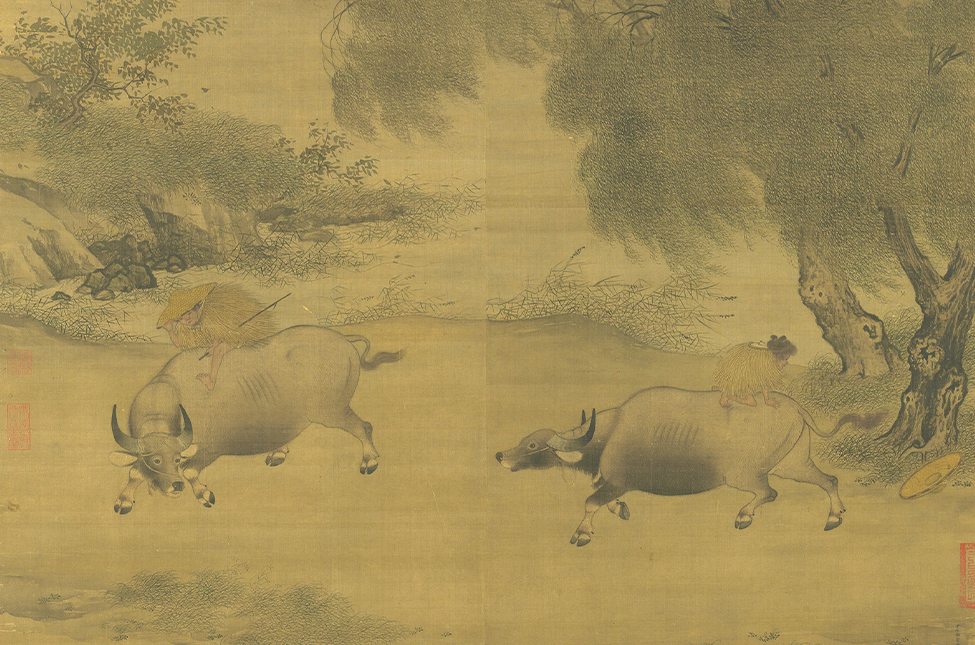Selections
-
Oxherds Returning in Wind and Rain
- Li Di (Fl. 12th c.), Song dynasty
- Ink and colour on silk
- 120.7x102.8cm
Li Di, who was active during the latter half of the 12th century, was recorded in history has having been a talented painter of flowers, birds, bamboo, rocks, and land animals. He was an important painter in the Southern Song dynasty court.
This painting portrays two shepherd boys driving oxen home on a windy, rainy day. The boy in front is huddled forwards, holding down his bamboo hat by its brim. Fully focused on his progress as he braves the wind, he is unaware that his partner behind him is preparing to leap off his ox’s back to retrieve his fallen hat. The oxen are walking single file, but the ox in front has its gaze turned backwards to look after its companion, while the ox in the rear has raised its head, allowing the two to maintain eye contact. Notably, the two young oxherds are so tormented by the inclement weather as to be nearly beside themselves, whereas the two beasts appear entirely placid and unperturbed, creating an intriguing sense of contrast. Li Di was highly intentional in his depiction of the oxen and oxherds, cleverly adding a sense of realism to the painting, and allowing viewers to feel almost as though present on this windswept rainy day. Even more importantly, the pair of oxen, previously the charges of the two boys, now seem to have taken on the roles of protectors. The oxen’s centrality is emphasized in the composition, and they are slightly anthropomorphized, adding to the work’s ability to elicit sympathy for the boys and the oxen. These effects conspire to deepen the emotional resonance between the painting and its viewers.
Li Di chose a horizontal composition for this painting, using fine, densely-packed lines to depict the boys’ and the oxen’s movements and expressions, as well as many other elements: the shepherds’ coarse woven rush raincoats, the oxen’s soft hair and rigid horns, the delicate willow leaves, the windblown grasses, and the pointy reeds. The foreground was painted with meticulous precision, while the background is an empty expanse. This method of presenting a foreground rife with substantiality against a backdrop of empty void was very much a product of its era. Song dynasty painters used this technique to evoke the way in which wind and rain restrict a person’s field of vision, and to add emphasis to a painting’s gloomy ambience. At the same time, this painting technique subtly insinuates the things that might exist in the background, giving viewers an opportunity to “fill in the blanks” with visual poetry born of their own imaginations.
| Title | Artist | Period |
|---|---|---|
| Oxherds Returning in Wind and Rain | Li Di (Fl. 12th c.) | Song dynasty |



